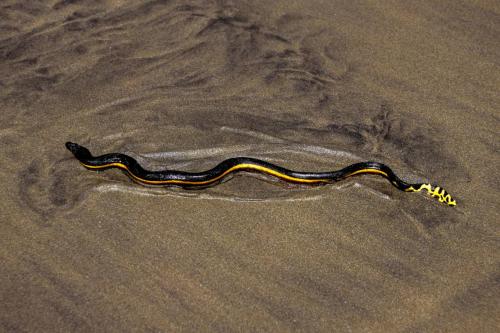
It was a daring nighttime escape.
After busting through an enclosure in his tank, the Inky the octopus appears to have quietly crossed the floor, slithered through a narrow drain hole about six inches in diameter and jumped into the sea. Then he disappeared.
Inky is a common New Zealand octopus, about the size of a soccer ball.
The breakout at the National Aquarium of New Zealand, which has made headlines around the world, apparently began when Inky slipped through a small gap in the mesh at the top of his tank.
A trail suggests he then slithered across eight feet of floor and slid down a 164-foot-long drainpipe that dropped him into Hawke’s Bay, according to reports in New Zealand’s news media.
The aquarium’s keepers noticed the escape when they came to work and discovered that Inky was not in his tank. A less independence-minded octopus, Blotchy, remained behind.
The aquarium’s manager said that employees searched the aquarium’s pipes after discovering Inky’s trail, to no avail.
Inky’s escape surprised few in the world of marine biology, where octopuses are known for their strength, dexterity and intelligence.
Octopuses are notorious escape artists. They have no bones, and can squeeze through any space their beak will pass through. Their beak is the only hard part of their body.
Octopuses have also been documented opening jars and sneaking through tiny holes on boats. Some have been seen hauling coconut shells to build underwater shelters. They have a complex brain, excellent eyesight, and research suggests they have an ability to learn and form mental maps.
One octopus at a British aquarium escaped nightly from his tank, slithered to a nearby tank to snack on fish for dinner, and went home.


 Along with the promise of a very stormy winter, the El Niño weather pattern that California is experiencing this year has brought other visitors: highly venomous yellow-bellied sea snakes.
Along with the promise of a very stormy winter, the El Niño weather pattern that California is experiencing this year has brought other visitors: highly venomous yellow-bellied sea snakes.



